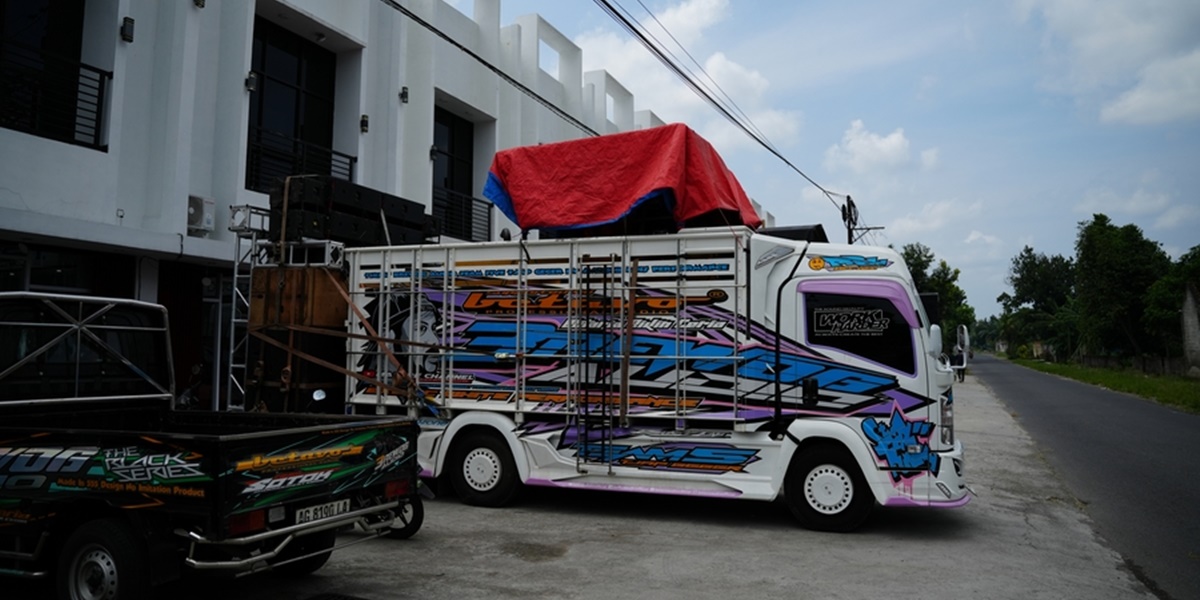Kapanlagi.com - The Horeg Sound phenomenon in East Java originated from the tradition of using large sound systems in various events and village carnivals, especially in the southern Malang region. The term horeg itself comes from Javanese, meaning to shake or vibrate, mimicking the strong bass thump. Initially, this giant sound system was used to play koplo dangdut music, deliver announcements, or support religious ceremonies, but over time it has evolved into a distinctive form of folk entertainment.
Technically, the horeg sound relies on a configuration of sub woofers and full range speakers with power ranging from dozens to hundreds of watt, focusing on low frequencies (20 - 60 Hz) to create physical vibrations that can be felt down to the ground. This equipment is usually mounted on trucks or trailers, making it easy to move from one location to another, which makes it ideal for traveling carnivals and static performances in multipurpose building yards.
Besides providing festive entertainment for the residents, this horeg sound also generates pros and cons, with many even looking down on it. Let’s discuss in more depth about this booming sound phenomenon that not only shakes the ground but also the eardrums!
1. Positive Impact of Sound Horeg
It was previously discussed that the phenomenon of sound horeg is a unique entertainment for the people. Especially for those who enjoy the thumping music or are simply interested in the crowd created because many people want to see and experience how the sound horeg actually works.
For the community, sound horeg can also be enjoyed for free. But of course, there is a price that must be paid by the person or institution that hires this sound service, and it certainly cannot be considered cheap. This can definitely be a promising business for sound horeg entrepreneurs who can get one call a week and can be very popular during the carnival season in August.
"If (the rental price) is minimal, this year it starts at around 30-35 (million), that’s the lowest. The smallest rate, so to speak. If it’s small, it means close by, Blitar, Malang is considered close. If it’s already to Pasuruan, to Mojokerto, it’s different again, different transport," said Muzahidin, one of the prominent figures in sound horeg, during an interview with KapanLagi.com regarding this phenomenon.
The man who is usually called Mas Brewog also explained that each time the sound horeg operates, seven crew members are needed in one truck. This means that the sound horeg can also provide job opportunities. This means if there are 10 trucks performing simultaneously, then there will be 70 people working.
Job opportunities are not just for the crew, but also for dancers who have long been seen as part of the sound horeg. Mas Brewog explained that dancers are not part of his crew, but are invited by those who hire the sound horeg. He always advises that the hired dancers should not have vulgar appearances.
2. Negative Impact of Sound Horeg

Mas Brewog (credit: KapanLagi.com/Guntur Merdekawan)
If there is a positive side, then there will also be a negative side. The same goes for this sound horeg phenomenon.
Although it can be a source of entertainment for the people, the performers and enthusiasts of sound horeg are often considered to have low human resources or to be unsophisticated. Mas Brewok is aware of the stigma attached to them. But he realizes that there will always be pros and cons.
"On average, Western people, those over there, Javanese people over there, especially in Jakarta, are usually city people. Because city people are indeed, perhaps, too high class, so sometimes they see village people creating things as tacky. So sometimes they think negatively, sometimes they think that it damages the environment, making a mess, right? They don’t really know the truth. The truth is if there is damage, it will definitely be replaced by the committee," said Mas Brewok.
The sound horeg, which has a loud thump, can even make windows and walls shake. This has made internet users anxious and consider the sound of horeg to be merely disturbing. But Mas Brewok emphasized that the residents have been fine and even laughed when the glass broke due to the extraordinarily loud sound.
"So what we went through was when it was being invited. So sometimes their house, the glass in their house breaks, and they even laugh,
'Wow, Brewok can break glass' like that. So they are even proud, then tell their friends with a big head like that. Then they are also ready to replace what broke, replaced by the committees, the ones who invited them. This is not a loss for them,
they are more about, what is it, more about prestige, more about pride like that, being able to break glass at this arrival, they are proud."
Another negative impact of the sound of horeg that can arise is the safety factor. Recently, a video of a dancer falling from the sound went viral on social media. Regarding this, Mas Brewok explained that it was all due to mistakes in installation and also a lack of caution when walking near tree branches.
However, the incident of the dancer falling from the sound made many netizens furious. Those who were anxious hoped that the sound of horeg would be banned from operating because it only caused losses. But Mas Brewok emphasized that the sound of horeg is definitely licensed.
"All horeg sound events are definitely licensed. So please note, netizens who are unclear about this, we are invited, there is definitely a permit. Yes, the inviter must take care of security permits, environmental permits, all sorts of permits,
which means that when we come, it is in a safe condition, there are no obstacles, no violations whatsoever, none," he stressed.
Not only that. There is also a competition for horeg sound. Recently, there was a horeg sound battle in the coastal area of Pasuruan, East Java. Fishermen set up a sound system while sailing with a volume of 135 decibels. This has received criticism from environmentalists because this noise can endanger marine life, especially those that rely on sound for navigation and communication, such as dolphins.
3. Is Sound Horeg Registered for Intellectual Property Rights?

Mas Brewog (credit: KapanLagi.com/Guntur Merdekawan)
The phenomenon of sound horeg has also caught the attention of the government. The Head of the East Java Regional Office of the Ministry of Law (Kakanwil Kemenkumham) Haris Sukamto, once expressed appreciation for sound horeg, which he considers a work of the nation’s children and stated that it deserves Intellectual Property Rights (HAKI). According to Haris, sound horeg can fall under the category of intellectual property copyright or industrial design, because it contains components and a system within it.
In response to this discourse, Mas Brewog admitted he has heard about it. He responded positively and if it comes to fruition, Mas Brewok hopes to facilitate the licensing process.
"It’s okay, that’s part of the regulation. What’s important is that it is allowed and made easier. Because starting now, there are many places where the licensing is complicated, the permits are difficult from the security side," he said.
4. How to Rent a Sound Horeg
Despite generating both pros and cons, the sound horeg business is still promising, with many interested in renting it. According to Mas Brewok, in a week, he can receive invitations once or sometimes twice. But during the carnival season, which runs from July to October, his team will have a packed schedule.
So if someone wants to rent a sound horeg for a carnival event, Mas Brewok says they need to book a year in advance and make an upfront payment. As for the rental cost, in the Malang area, it's around Rp 30 - 35 million. If it's outside the city, the price can be even higher.
And even more importantly, if you want to rent a sound horeg, you must obtain permission first from the relevant authorities.
What do you think, KLovers, about this sound horeg phenomenon? Don't forget to share your comments; if not now, when?
(kpl/pit)
Disclaimer: This translation from Bahasa Indonesia to English has been generated by Artificial Intelligence.














